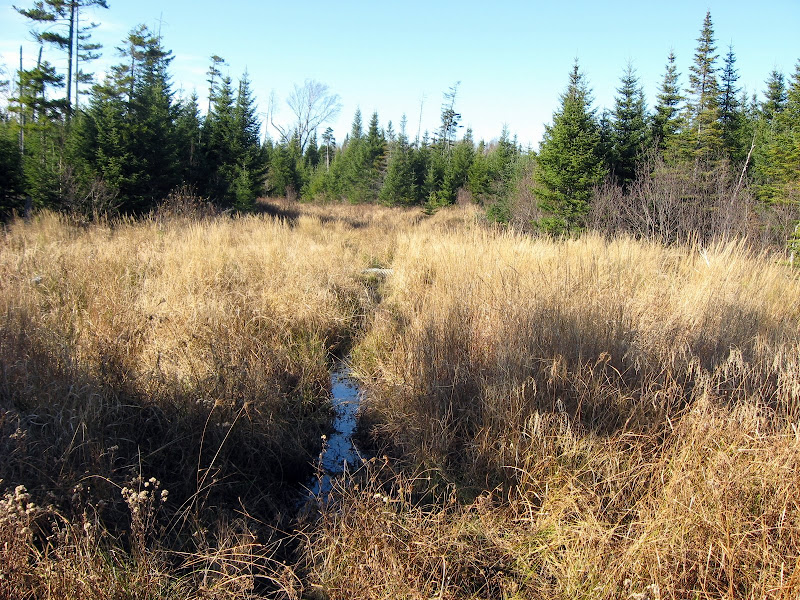Papa Bear
New member
My recent hikes and adventures coupled with recent weather trends, have taken me more often than I would like though boggy area.
From crossable flooding (say 10' long by 8" deep) on woods roads to less easily crossable areas in log yards and skid roads (20-30' by 12" - but with grass on top), and finally to beaver ponds where the standing water and mud underneath may be several feet in depth.
Beavers take out a road

Often in boggy areas, say along the US-Canada border swath, you can sometimes manage to step on the grass and vegetation and sometimes move on to the next spot it before you sink. Or some times not.
Places like this

I just got a pair of 16" Bean boots, and even they just put off the inevitable.
What do pros do? Surveyors, forest engineers, loggers, boundary perambulators? What to they do? What do you guys do?
I have opted out of the Fisherman's hip boots or complete (arm pit?) boots for fear of falling over and drowning. Besides I could hardly hike the miles before during and after the boggy parts in such.
Here's an idea: for vegetated bogs, wear snow shoes or something similar, and try to keep above the vegetation and not sink? But I have visions of the snow shoes getting stuck in the mud and my days ending with the bottom (of me) drowning and the top (of me) being eaten alive by bugs.
Should I contemplate a rubber raft for big areas? Or would that be a wasted effort getting the thing in and out.
Anyone have any clever solutions? Thanks.
From crossable flooding (say 10' long by 8" deep) on woods roads to less easily crossable areas in log yards and skid roads (20-30' by 12" - but with grass on top), and finally to beaver ponds where the standing water and mud underneath may be several feet in depth.
Beavers take out a road

Often in boggy areas, say along the US-Canada border swath, you can sometimes manage to step on the grass and vegetation and sometimes move on to the next spot it before you sink. Or some times not.
Places like this

I just got a pair of 16" Bean boots, and even they just put off the inevitable.
What do pros do? Surveyors, forest engineers, loggers, boundary perambulators? What to they do? What do you guys do?
I have opted out of the Fisherman's hip boots or complete (arm pit?) boots for fear of falling over and drowning. Besides I could hardly hike the miles before during and after the boggy parts in such.
Here's an idea: for vegetated bogs, wear snow shoes or something similar, and try to keep above the vegetation and not sink? But I have visions of the snow shoes getting stuck in the mud and my days ending with the bottom (of me) drowning and the top (of me) being eaten alive by bugs.
Should I contemplate a rubber raft for big areas? Or would that be a wasted effort getting the thing in and out.
Anyone have any clever solutions? Thanks.
